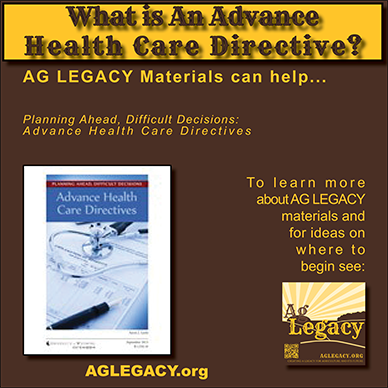#AGLEGACY.org #FarmSuccession #EstatePlanning
AG LEGACY Materials can help…
To learn more about AG LEGACY materials and for ideas on where to begin see AGLEGACY.org
Category Archives: Post
WHY GROW RELATIONSHIPS?
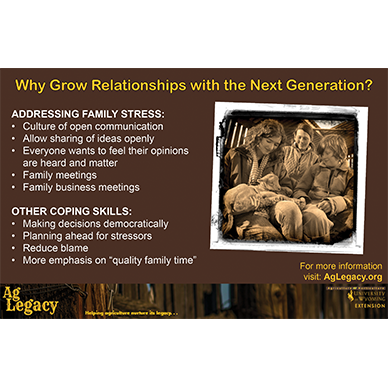
ADDRESSING FAMILY STRESS:
Culture of open communication
Allow sharing of ideas openly
Everyone wants to feel their opinions are heard and matter
Family meetings
Family business meetings
OTHER COPING SKILLS:
Making decisions democratically
Planning ahead for stressors
Reduce blame
More emphasis on “quality family time”
#AGLEGACY.org #FarmSuccession #EstatePlanning
WHY GROW RELATIONSHIPS?

The Why Build Relationships module covers challenges to managing relationships between generations in any family. See our recording outlining the how to build your relationships with next generation at AGLEGACY.org.
#AGLEGACY.org #FarmSuccession #EstatePlanning
WHY GROW RELATIONSHIPS?
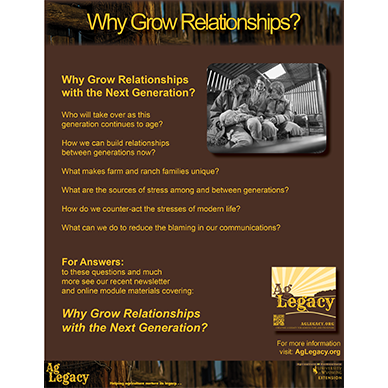
* Who will take over as this generation continues to age?
* How we can build relationships between generations now?
* What makes farm and ranch families unique?
* What are the sources of stress among and between generations?
* How do we counter-act the stresses of modern life?
* What can we do to reduce the blaming in our communications?
FOR ANSWERS:
See our recent newsletter and online module materials covering: Why Grow Relationships with the Next Generation?
#AGLEGACY.org #FarmSuccession #EstatePlanning
After a Death: What Steps are Needed?
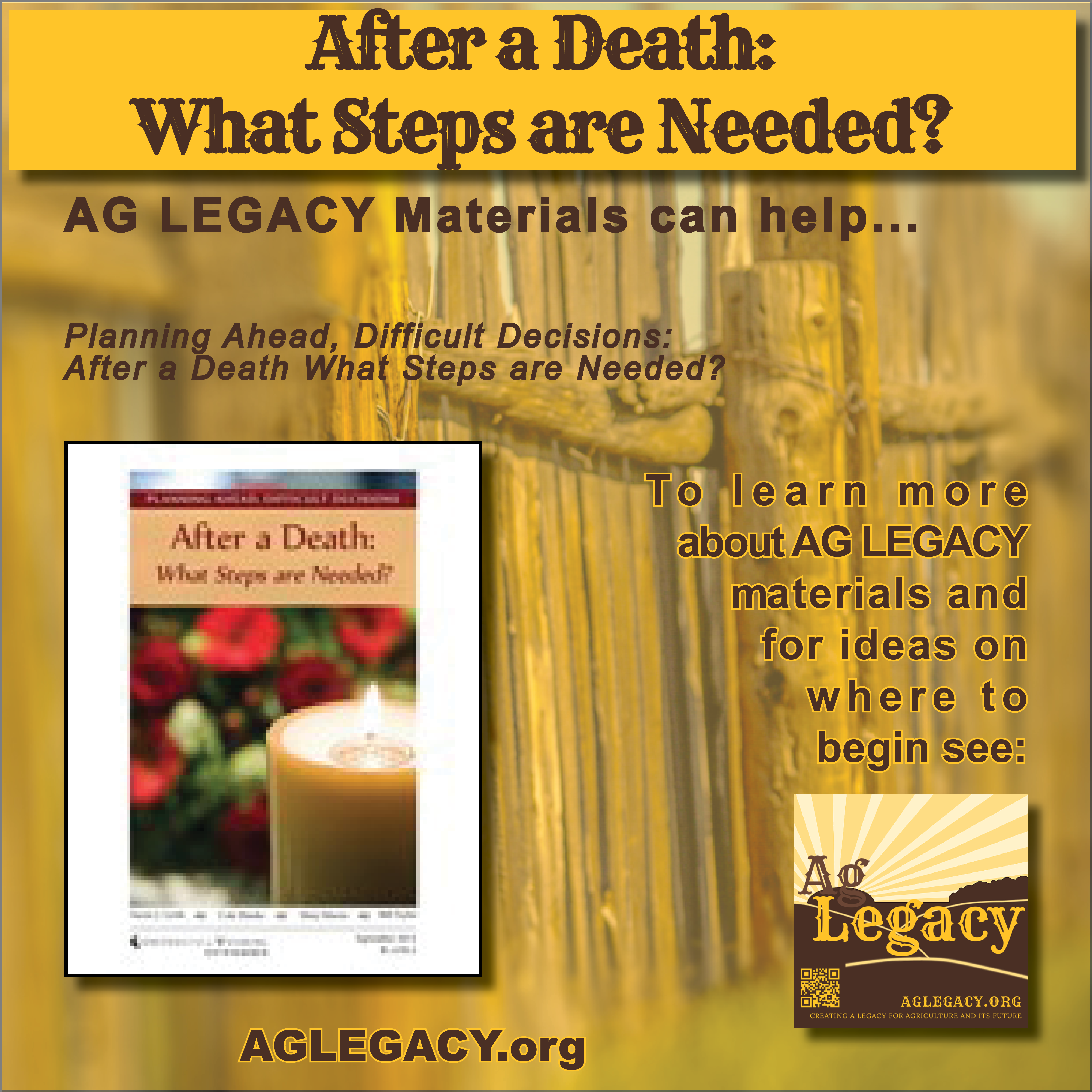
AG LEGACY Materials can help…
To learn more about AG LEGACY materials and for ideas on where to begin see AGLEGACY.org
#AGLEGACY.org #FarmSuccession #EstatePlanning
Do You Have a Succession Plan?
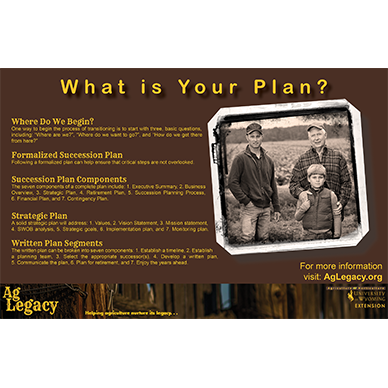
Most farmers and ranchers realize that a solid estate plan involves outside professionals. However, those professionals typically do not address day-to-day business management nor preparing the next generation to take over when the time comes.
Where Do We Begin?
One way to begin the process of transitioning is to start with three, basic questions, including: “Where are we?”, “Where do we want to go?”, and “How do we get there from here?”
Formalized Succession Plan
Following a formalized plan can help ensure that critical steps are not overlooked.
Succession Plan Components
The seven components of a complete plan include: 1. Executive Summary, 2. Business Overview, 3. Strategic Plan, 4. Retirement Plan, 5. Succession Planning Process, 6. Financial Plan, and 7. Contingency Plan.
Strategic Plan
A solid strategic plan will address: 1. Values, 2. Vision Statement, 3. Mission statement, 4. SWOB analysis, 5. Strategic goals, 6. Implementation plan, and 7. Monitoring plan.
Written Plan Segments
The written plan can be broken into seven components: 1. Establish a timeline, 2. Establish a planning team, 3. Select the appropriate successor(s), 4. Develop a written plan, 5. Communicate the plan, 6. Plan for retirement, and 7. Enjoy the years ahead.
#AGLEGACY.org #FarmSuccession #EstatePlanning
AG LEGACY
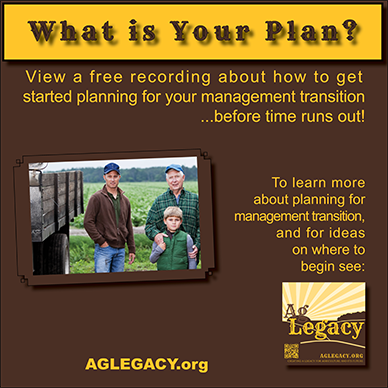
What is Your Management Succession Plan?
View a free recording on developing a succession plan at AGLEGACY.org
#AGLEGACY.org #FarmSuccession #EstatePlanning
What is Your Plan?
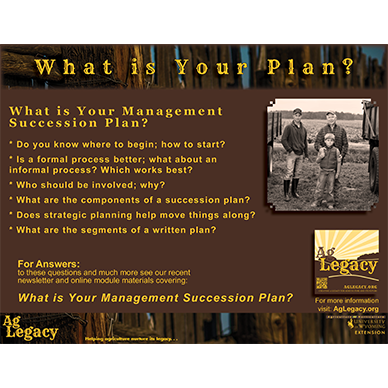
* Do you know where to begin; how to start?
* Is a formal process better; what about an informal process? Which works best?
* Who should be involved; why?
* What are the components of a succession plan?
* Does strategic planning help move things along?
* What are the segments of a written plan?
#AGLEGACY.org #FarmSuccession #EstatePlanning
What is Your Management Succession Plan?
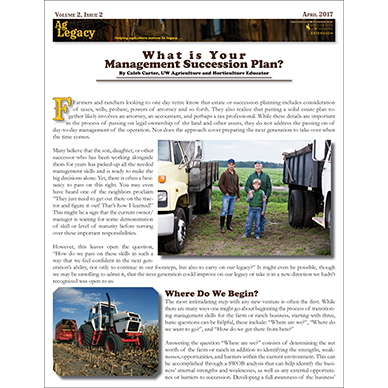
Farmers and ranchers looking to one day retire know that estate or succession planning includes consideration of taxes, wills, probate, powers of attorney and so forth. They also realize that putting a solid estate plan together likely involves an attorney, an accountant, and perhaps a tax professional. While these details are important in the process of passing on legal ownership of the land and other assets, they do not address the passing on of day-to-day management of the operation. Nor does the approach cover preparing the next generation to take over when the time comes.
#AGLEGACY.org #FarmSuccession #EstatePlanning
What is an AG LEGACY?
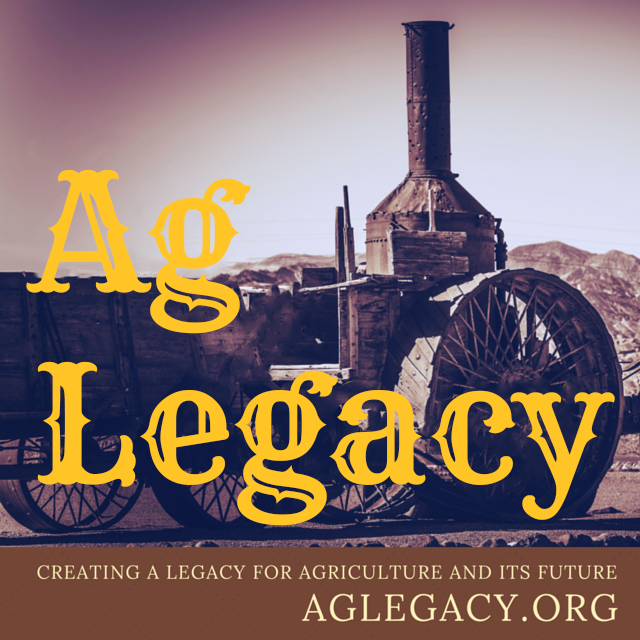
Helping agriculture nurture its legacy . . .
A legacy is the summation of a lifetime of achievement and the context in which that lifetime will be remembered. A legacy is not just money but a reputation, what was accomplished, and the difference a person makes in the world as they pass through.
#AGLEGACY.org #FarmSuccession #EstatePlanning
